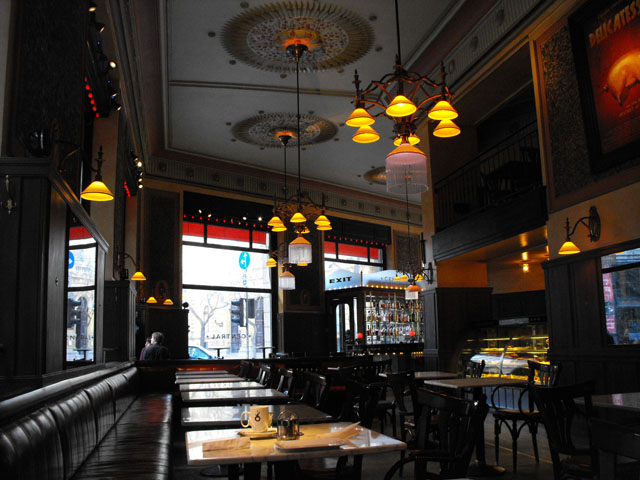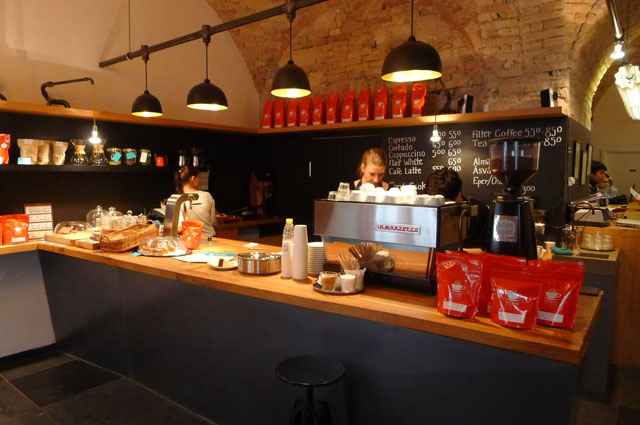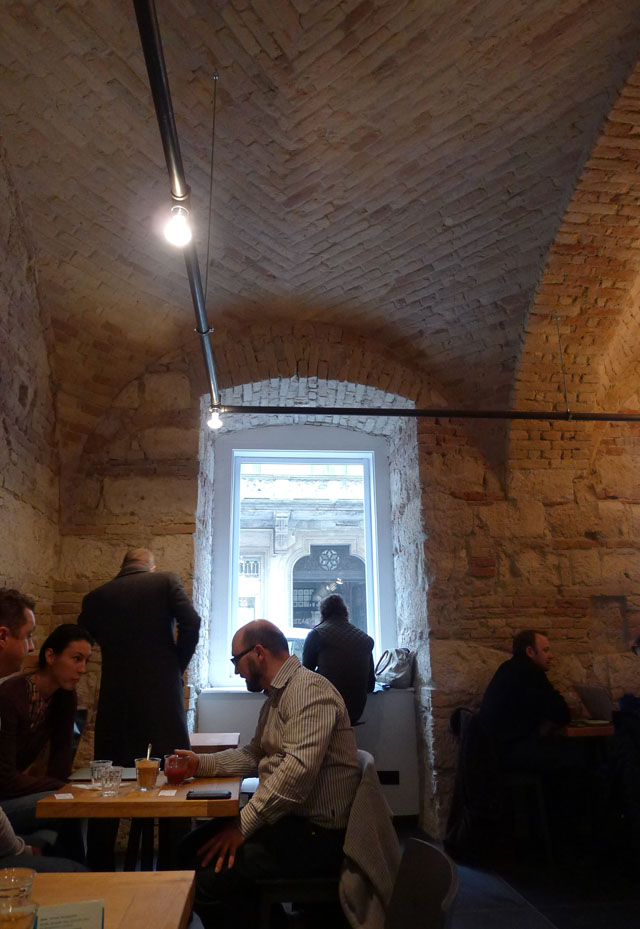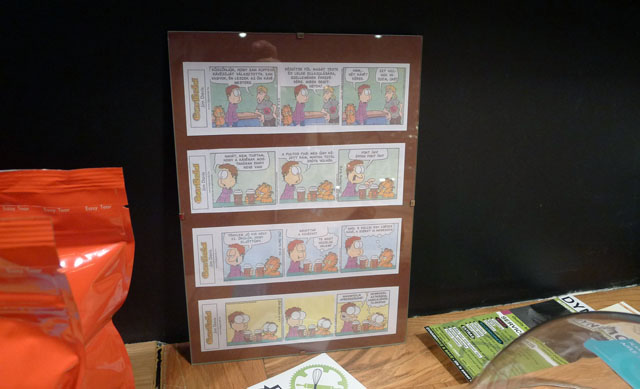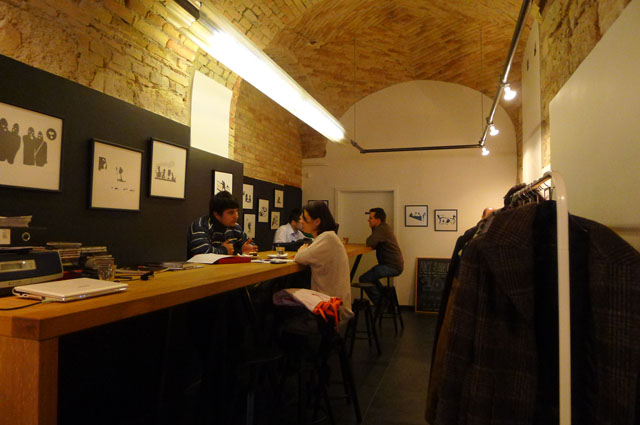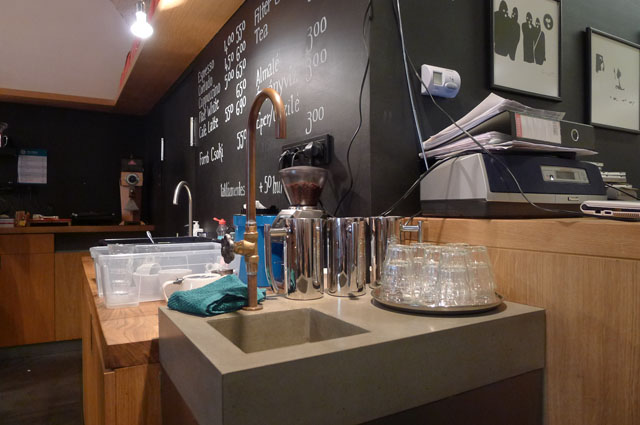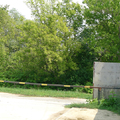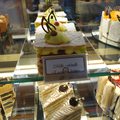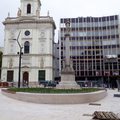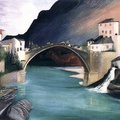Anytime we are talking about Budapest and having a coffee, most of us think about this:
And this:
The New York and the Centrál cafe are older than Mathuselah. They are from the age when Budapest was a real cafe-superpower. If we visit these places we feel like we are at the turn of the century again, when there have been more than 60 cafes in Nagykörút and nine cafes between the Oktogon and Podmaniczky utca. The golden age of Budapest. The city what as we know it today was built in these times. Poets were sitting next to the marble tables, having their breakfasts and joking loudly with the well read waiters.
How does a cafe look like nowadays?
This is the Espresso Embassy in the Arany János utca. It is clear, simple and because of the raw bricks it looks big. The counters at the back are similar to the ones in a coworking office, so everybody's staring at their laptop and two of them are talking to each other in English. One of them is explaining something and the other one is nodding his head, so it might be a kind of tutoring.
But what is more important than the atmosphere is the quality of the coffee. This is the new criterion, which points out the difference between good and bad places. The stories coming from the turn of the century do not mention where you could have better coffee – or if there was a difference it wasn’t that big. The ’quality’ of the guests made the difference. And nowadays the difference is made by where the coffee beans are roasted, which plantation are they from and what kind of technique is used to make the coffee.
You can feel the massive contrast between the raw brick walls and the soft taste of the coffee. Because here they are working with the same Has Bean coffee, what you can also find at Pinta, or at the Tamp&Pull (Probably Attila Molnár, the owner of Tamp&Pull is the supplier of this place too). Attila swears on this brand because only real, selected quality coffee beans are used which are coming from small producers. You can only buy them until they are on stock, so the contents of the red bags are always changing. The coffee beans are gently roasted so we can still feel the fruity aroma and flavour. Later on it is gently scalded with specially filtered water on a temperature of 89-94 C°.
The result is the same, just like at the Tamp&Pull. We get a rich, sour but great coffee. It would be a shame to put sugar in it. I only had some milk in it: I usually drink cortado, which is basically a double ristretto (twice as strong as espresso) with some warm milk. The coffee of the week was the Bolivia Copacabana. According to the English description on the bag the proper expression for this type of coffee is 'yellow'. It is mainly because of the apricot, orange and mango flavour. I'm not a professional, so I accept it. Though I can really feel the fruit in the beetroot orange pie, it is unbelievably tasty.
So in a brand new cafe you have the place of your laptop and you can start working. The question before the order is always the same 'what kind of coffee are we going to drink now?'. Here you come to have a gastronomic experience. Behind the counter professional baristas at work and the owner has also won some kind of championship in this field (in this case Tibor Várady, who won the category of Aeropress Brewers, whatever it means). The interior is minimal, which is quite raw somewhere, but bright. And also cozy, as a friend of mine told me who came home from London.
Oh, and the filtered water is for free, make yourself at home:
I really hope that the atmosphere of the more than hundred years’ old cafes with bow ties and spoon clattering remain and the new trend won’t take away this feeling. Or I have an idea: what if they start to offer high quality coffee too so there won’t be any chance for that.
Espresso Embassy
Arany János u. 15
Opening hours Mo-Fr: 7-19, Sa: 9-19
If you want to get to know the authentic side of Budapest, the best bars, restaurants, clubs and events, join our Facebook group where you can find all the information you need.



